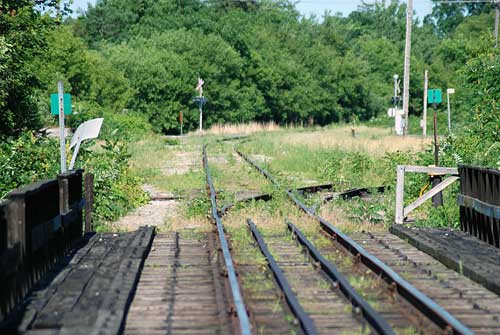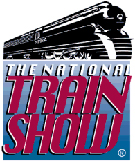Another Delhi turnout
Spring Rail Frog
Taken last summer looking down the line in Delhi, Ont. toward Simcoe. I shot this with a 300mm lens and it is always interesting to see how the distortion of a long lens exaggerates imperfections in trackwork. The distance in this shot is about a quarter mile from where I was standing to the curve ahead.
The turnout in front of me has a Spring Rail Frog which is designed to eliminate the gap in the frog of the turnout. Typically used on a mainline where a seldom used spur that would make it necessary for traffic to slow when crossing the turnout. At one time trains would blow through here at 80mph, making the spring rail frogs necessary.
When a train is routed for the spur, the wheels of the cars or engine would simply force the wing rail of the frog to one side allowing the train to pass. Once passed the turnout the rail springs back closing the gap in the frog. This can be done from either direction.
-Tim
About the Author:
I'm your host, Tim Warris, a product developer in Port Dover, Ontario. Since March of 2007 I have been documenting the construction of the former CNJ Bronx Terminal in HO scale. For my day job, I design track building tools for Fast Tracks, a small company I own and operate. Fast Tracks makes it fast and easy to hand lay your own trackwork. Stop by our website to learn more!
Posted by: Tim | 11-13-2007 | 10:11 AM
Posted in: Picture of the Day


It is interesting to note that the predominate path has the inset point rail vs. the prime point rail. This is usually opposite for standard fixed frog point rails. I can see that the forces for forcing the wing rail would preference the solid point rail. I also noted the semi-self guarding wheel face extrusion on the closed wing rail as well (in the reference link graphics a bit clearer).
Does the photographed live sample show these details as well, or was the patent drafting design superseded in actual practice?
P.S. Long lens exaggeration also affects the apparent diverging route angle rather drastically.
-ed mccamey-